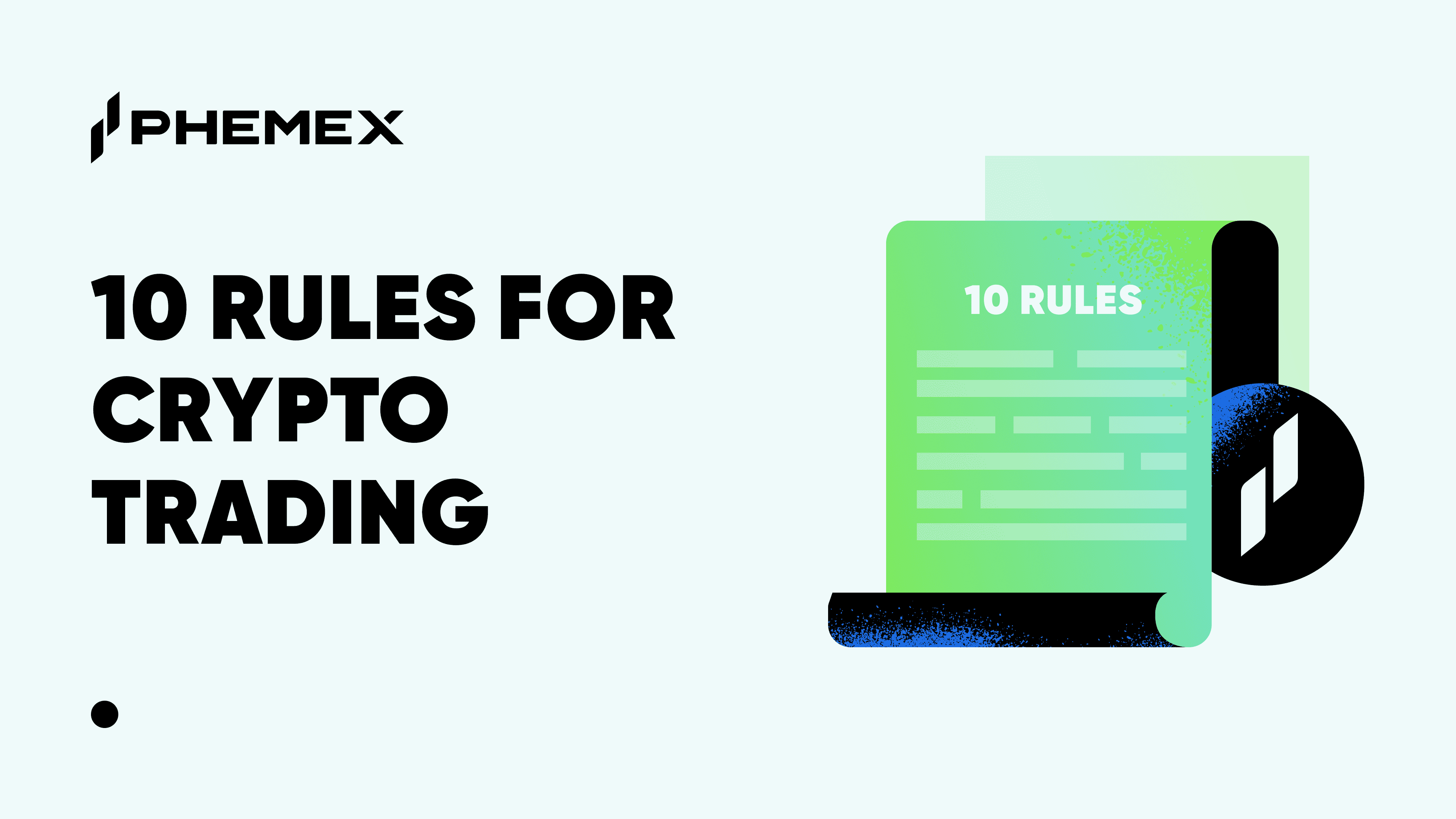What is Spot Trading in Crypto?
Spot trading in the crypto market is a straightforward strategy where traders purchase cryptocurrencies and hold them until their value increases. For instance, if a trader buys Bitcoin, her goal is to sell it at a higher price later, thus making a profit.
This form of trading is distinct from margin or futures trading, which involves speculating on the price movements of cryptocurrencies. In spot trading, traders actually buy and sell cryptocurrencies, thereby gaining ownership of the assets. However, it's important to note that spot trading differs from long-term investing or HODLing, as it focuses on short-term gains through frequent transactions to leverage price fluctuations.
In spot trading, you use your own funds to buy assets, limiting your purchase to what you can afford. This approach is often deemed safer than other forms of trading, like margin trading, where losses can exceed your initial investment. In spot trading, the worst-case scenario typically involves losing the invested amount, without additional liabilities.
Three key elements define spot trading: the spot price, the trade date, and the settlement date. The spot price is the current market price of an asset, at which traders can immediately execute a sale. Cryptocurrencies can be traded with others on various exchanges at this price. The spot price is dynamic, fluctuating with new orders and completed transactions. The trade date marks the execution of the trade, while the actual transfer of assets occurs on the settlement date, or the spot date.
The interval between the trade date and the settlement date can vary, depending on the market. In the cryptocurrency sector, settlements often occur on the same day, though this can differ based on the exchange or trading platform used.
How Spot Trading Works in Crypto?
Spot trading in the crypto world can be initiated through either a centralized exchange (CEX) or a decentralized exchange (DEX). While CEXs operate on an orderbook model, DEXs utilize smart contracts and automated market makers (AMMs). Generally, CEXs provide a more user-friendly interface, making them a preferred choice for beginners in crypto trading.
In spot trading, you have the opportunity to purchase various cryptocurrencies, including Bitcoin (BTC) and Ethereum (ETH), using fiat currencies or by trading between different cryptocurrency pairs. To start, select a suitable exchange – for illustration, let's consider Luno, a centralized exchange. After setting up an account, deposit fiat currency or transfer crypto from another wallet into your exchange account. Next, choose the cryptocurrency pair you wish to trade, such as BTC/USDC.
The order types available include market, limit, and stop limit orders. For instance, selecting the BTC/USDC pair, you specify the amount you want to trade and then execute a 'buy' order. Your buy order will be fulfilled when it aligns with a corresponding sell order in the orderbook. Market orders are typically filled swiftly, resulting in almost instantaneous trade settlement.
Alternatively, Over-The-Counter (OTC) trades are facilitated by trade dealers and not software solutions. DEXs leverage blockchain technology to pair buy and sell orders, enabling traders to execute spot trading strategies directly from their wallets, thanks to smart contracts. Trading can also occur on OTC platforms, through brokers, or even over the phone in today’s digital age.
Once you have acquired your assets, you can utilize any of these methods to sell them at a higher price, thereby realizing your gains, provided the value of your asset has increased.
Pros of Crypto Spot Trading
Crypto spot trading offers the distinct advantage of true asset ownership when you purchase at the spot price. This control allows traders the flexibility to sell their cryptocurrency or transfer it to offline storage as desired. Additionally, owning the asset opens up opportunities to use your cryptocurrencies for other purposes, like online payments or staking.
Simplicity
Spot trading stands out for its simplicity. It doesn't require complex wallets, platforms, or tools. The process involves buying the asset at its current market price. This straightforward approach is ideal for integrating with strategies like HODLing (holding cryptocurrencies long-term with the expectation of value appreciation) and DCAing (Dollar Cost Averaging). These strategies are particularly effective for blockchains with active use and strong community support, as holding cryptocurrencies over several years can yield significant returns.
Accessibility
Another significant benefit of spot trading is its wide accessibility. Spot orders can be executed on various platforms and are available almost globally, making crypto spot trading highly accessible to a broad audience.
Lower Risk Compared to Other Strategies
While all trading carries inherent risks, spot trading is generally considered less risky compared to leverage trading or futures trading. Leverage trading involves borrowing funds, increasing the potential for greater losses, while futures trading in the speculative crypto market carries its own set of risks. In contrast, spot trading simply involves buying and selling the asset at its current price, without the complications of margin calls or additional contributions beyond what's already in your account. This makes it a safer option, particularly for those cautious about exposing themselves to the volatile nature of crypto markets.
Cons of Crypto Spot Trading
Spot trading in the crypto realm has certain drawbacks, with the most notable being the absence of leverage. This limitation means that traders can only utilize their own capital, restricting the scope for magnifying returns. In contrast, margin trading in crypto allows for potentially higher gains due to the leverage involved.
Liquidity Challenges: Liquidity is a significant concern in spot markets, particularly during bear markets. Smaller altcoins may experience a drastic reduction in liquidity, complicating the process for traders wishing to convert their crypto assets into fiat currency. This situation may lead traders to either sell at lower prices or hold onto their investments for an extended period.
Physical Delivery Requirements: For commodities traded on the spot market, like crude oil, physical delivery is often a requirement. This can be a logistical challenge and may not always be practical.
Fees: Various fees are associated with spot trading, including trading fees, withdrawal fees, and network fees, particularly when trading cryptocurrencies. These costs can diminish the overall profitability of trading activities.
Market Volatility: The crypto market is notoriously volatile, presenting a risk for spot traders. Sudden and significant price fluctuations can lead to substantial losses, requiring traders to be vigilant and cautious.
Trading Platform Risks: Choosing a trading platform is a crucial decision in crypto spot trading. Centralized exchanges (CEXs) have faced financial difficulties and even bankruptcy in the past, risking users' ability to withdraw their funds. On the other hand, decentralized exchanges (DEXs) offer more control over assets but can be less user-friendly, especially for those new to crypto trading.
Is Crypto Spot Trading Profitable and How?
Earning profits through crypto spot trading is feasible, yet it demands careful strategy planning and patience. A common technique employed by traders is dollar-cost averaging, where they purchase cryptocurrencies at lower prices and hold onto them until their value increases, often aligning their sale with the arrival of the next bull market. This approach is particularly effective in the crypto market, known for its significant price volatility.
However, it's crucial to note that profits in spot trading materialize only when the cryptocurrencies are sold, be it for fiat currency or a selected stablecoin. Traders need to engage in extensive research and effective risk management to minimize potential losses. The success of spot trading in the crypto sphere also hinges on an investor's individual risk-return profile and their depth of market knowledge.
Unlike traditional stock markets, where buying shares can yield dividends as companies share profits with their shareholders, cryptocurrency trading profits are predominantly realized through asset value appreciation. For those new to the field, crypto spot trading can be a suitable entry point, but it does require a solid understanding of market trends and the ability to withstand market fluctuations. Traders should thoughtfully assess their readiness to handle the risks and possible rewards that come with this trading method.
Spot Trading vs. Future Trading
Spot Markets:
- Immediate Delivery: In spot markets, the transaction involves the immediate purchase and delivery of assets, such as Bitcoin or other cryptocurrencies. This allows traders to gain immediate possession of the asset.
- Long-Term Strategy: Spot market trading is typically aligned with a long-term investment strategy. Traders buy crypto assets when prices are low and aim to sell them when their value increases, usually over an extended period.
Futures Trading:
- Not Owning the Underlying Asset: Futures trading in the crypto market is unique in that it does not involve owning the actual asset. Instead, futures contracts represent a commitment to the asset's future value.
- Agreement on Future Transactions: In futures trading, you enter an agreement to buy or sell the asset, such as Bitcoin or other cryptocurrencies, at a pre-agreed price on a specified future date.
- Shorting and Leverage: This form of trading allows for shorting the market and utilizing leverage. These tools can be particularly advantageous for those looking to make short-term gains in the crypto market.
- Cash Settlement: Typically, futures contracts are settled in cash upon reaching their expiration date, as opposed to actual delivery of the underlying crypto asset.
The Differences Between Spot Trading and Margin Trading
Spot Trading:
- Capital Use: In spot trading, traders invest their own funds to acquire assets such as stocks or cryptocurrencies. This approach does not entail the use of borrowed money.
- Profit Dynamics: Earnings in spot trading generally materialize when the value of the asset, be it Bitcoin or another crypto, increases.
- Risk Profile: The risk associated with spot trading is often seen as lower since it involves investing personal capital, with profits dependent on the appreciation of the asset's price.
- Leverage: Leverage is not a component of spot trading.
Margin Trading:
- Borrowing Capital: Margin traders use borrowed funds to buy greater quantities of assets, including stocks and cryptocurrencies, thus enhancing their purchasing power.
- Margin Requirements: To avoid margin calls, traders in margin trading must adhere to specific margin requirements.
- Timeframe and Costs: Margin trading typically involves a shorter operational timeframe due to the costs linked to margin loans.
- Profit Dynamics: In margin trading, profits can be achieved when the crypto market moves in any direction, up or down, providing more versatility compared to spot trading.
- Risk Profile: Margin trading is viewed as more hazardous, with the potential for losses to surpass the initial investment.
- Leverage: This trading style employs leverage, which can lead to significantly higher profits or losses.
Read More
- What is Contract Trading in Crypto & How does it Work?
- Day Trading Crypto for Beginners: Get started with Day Trading
- Crypto Trading vs. Investing: Key Differences Explained
- How To Trade Crypto: The Ultimate Investing Guide
- What are Crypto Options & How do They Work?
- What is Contract Trading: How to Trade Crypto Derivatives on Phemex
- What are Crypto Futures & How do They Work?
- What is Social Trading in Crypto & How does it Work?







